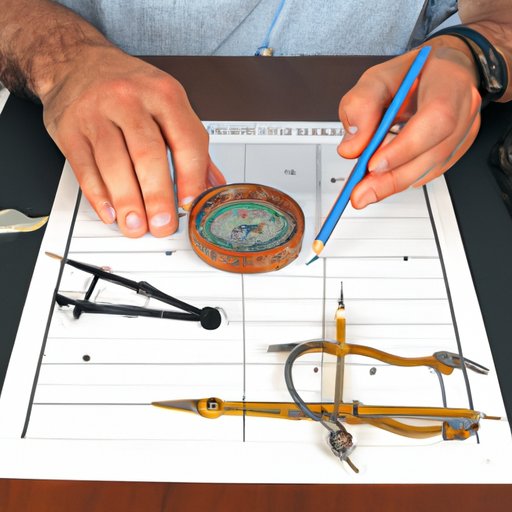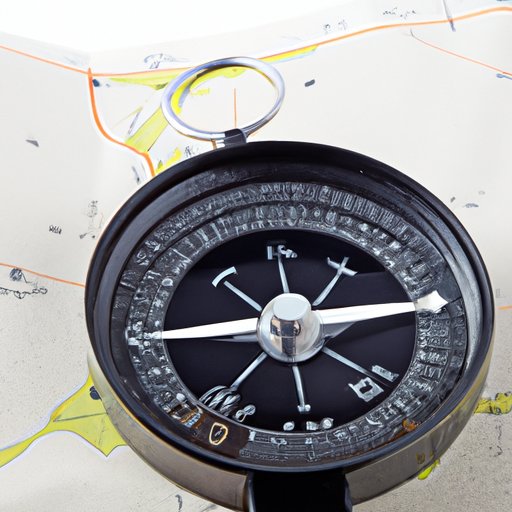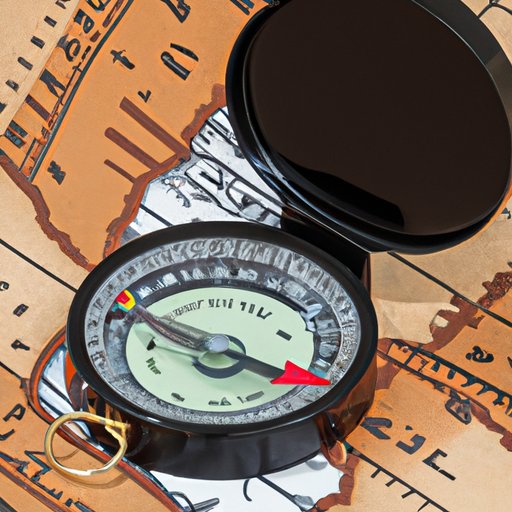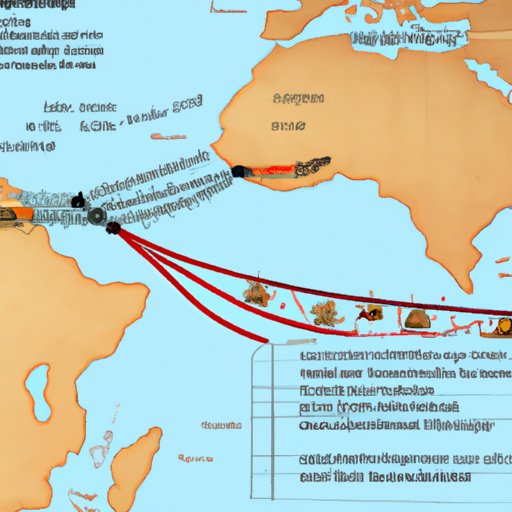Introduction
The compass is one of the most important inventions in human history, allowing us to navigate our way through uncharted territories and unknown lands. But when was the compass invented? This article will explore the history of the compass, from its invention in ancient China to its impact on maritime trade and exploration.
Definition of the Compass
A compass is a navigational tool used for determining direction. It typically consists of a magnetized needle that is balanced on a pivot point, allowing it to rotate freely. The needle is aligned with the Earth’s magnetic field, pointing north-south.
Overview of the Problem
In order to accurately determine direction, it is necessary to have a reliable navigational tool. Without such a tool, sailors and other travelers would be left to rely on their own instincts or the stars to help them find their way. The invention of the compass revolutionized navigation and made long-distance travel much easier and safer.
Historical Overview of the Invention of the Compass
The exact origin of the compass is uncertain, but it is believed to have been invented in ancient China. According to historical records, the first compasses were used as early as the 4th century BC.
Origins of the Compass
While it is not known exactly who invented the compass, it is generally believed to have originated in ancient China. According to archaeological evidence, the earliest compasses were made of lodestone, a naturally magnetized ore of iron. These primitive compasses were used for divination and geomancy, rather than for navigation.
Development of Early Compasses
By the 11th century AD, the Chinese had developed a more sophisticated version of the compass, which used a magnetized needle suspended in water. This design allowed users to determine direction more accurately. By the 13th century, the compass had spread to Europe, where it was adapted for use in navigation.
Exploring the Development and Evolution of the Compass
The development and evolution of the compass has been a long and complex process. Over the centuries, different cultures have added their own innovations and improvements, resulting in a device that is now essential for navigation.
Ancient Chinese Contributions to Compass Technology
The Chinese were the first to develop a compass for practical purposes. They improved the design of the compass by adding a magnetized needle and suspending it in water. They also developed the first maps using a compass, which allowed them to plot courses across vast distances.
European Adaptations of the Compass
When the compass reached Europe in the 13th century, it was quickly adopted by navigators and explorers. The Europeans improved the design of the compass by adding a wind rose, which showed the cardinal directions (north, south, east, and west). This allowed navigators to more easily determine direction.

Investigating the Role of the Compass in Ancient Navigation
The compass was an invaluable tool for ancient navigators. Before its invention, navigation relied heavily on instinct and guesswork. With the advent of the compass, navigation became much more accurate and reliable.

Use of the Compass for Directional Purposes
The primary purpose of the compass was to allow navigators to determine direction. The magnetized needle of the compass always pointed north, making it easy for navigators to orient themselves. This allowed them to plot courses more accurately and avoid getting lost.
How the Compass Improved Accuracy of Navigation
Before the invention of the compass, navigation was largely a matter of trial and error. With the compass, navigators were able to take precise measurements and plot courses with greater accuracy. As a result, they were able to voyage farther and explore new lands with confidence. According to historian John Fiske, “The compass was the great instrument of geographical discovery.”

Examining the Impact of the Compass on Exploration and Migration
The compass had a profound impact on exploration and migration. It allowed explorers to venture into uncharted territories with confidence and enabled settlers to migrate to distant lands.

Expansion of Trade Routes and Exploration
The compass enabled explorers to chart new trade routes and discover new lands. For example, Christopher Columbus famously used the compass to navigate his way to the Americas. With the aid of the compass, European explorers were able to expand their trade networks and open up new markets.
Influence of the Compass on Migration Patterns
The compass also had a significant impact on migration patterns. With the aid of the compass, settlers were able to travel to distant lands with confidence. This enabled them to establish colonies in previously unexplored regions and helped to shape the modern world.
Analyzing the Influence of the Compass on Maritime Trade and Exploration
The compass played an important role in the development of maritime trade and exploration. It allowed sailors to accurately chart courses across oceans and seas, which enabled them to expand their trading networks and explore new lands.
Increased Efficiency of Maritime Trade
The compass allowed sailors to map out efficient routes for their ships. This increased the efficiency of maritime trade and enabled merchants to transport goods more quickly and reliably. According to a study by the National Maritime Museum, “The compass enabled navigators to confidently set sail on voyages to faraway places, with the assurance that they could return safely.”

Impact of the Compass on Maritime Exploration
The compass also enabled sailors to explore new lands with confidence. Explorers such as Vasco da Gama and Ferdinand Magellan used the compass to chart their way around the globe and discover new continents. This opened up a whole new world of opportunities for trade and exploration.
Conclusion
The compass is one of the most important inventions in human history. Its invention in ancient China allowed navigators to accurately determine direction, which enabled them to explore new lands and expand their trading networks. The impact of the compass on maritime trade and exploration has been immense, and its influence can still be felt today.
Summary of Findings
This article explored the history of the compass, from its invention in ancient China to its impact on maritime trade and exploration. We examined the development and evolution of the compass, as well as its role in ancient navigation, exploration, and migration. We also analyzed the influence of the compass on maritime trade and exploration, and how it enabled sailors to map out efficient routes and explore new lands.
Final Thoughts
The compass has had a profound impact on human civilization. From its invention in ancient China to its use in modern navigation, the compass has enabled us to explore the world around us and expand our horizons. Its influence can still be seen today, and it remains an invaluable tool for navigation and exploration.
(Note: Is this article not meeting your expectations? Do you have knowledge or insights to share? Unlock new opportunities and expand your reach by joining our authors team. Click Registration to join us and share your expertise with our readers.)
